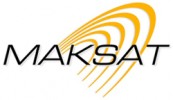


i
Teleindia
Networks
Work with us
![]()
Filter interviews by
Teleindia Networks Interview Questions and Answers
5 Interview questions
OSI layers are a conceptual framework that standardizes the functions of a telecommunication or computing system into seven abstraction layers.
OSI stands for Open Systems Interconnection.
There are 7 layers in the OSI model: Physical, Data Link, Network, Transport, Session, Presentation, and Application.
Each layer has specific functions and communicates with the adjacent layers.
Example: The Physical layer deals wit...
The person is productive for 7 hours.
The person works for 9 hours but takes a 1-hour break and 1-hour lunch.
Productive time is the time spent working without breaks or lunch.
Therefore, the person is productive for 7 hours.
The OSI model has seven layers, each serving a specific role in network communication.
Layer 1: Physical - Deals with hardware connections (e.g., cables, switches).
Layer 2: Data Link - Manages node-to-node data transfer (e.g., Ethernet).
Layer 3: Network - Handles routing of data packets (e.g., IP addressing).
Layer 4: Transport - Ensures complete data transfer (e.g., TCP, UDP).
Layer 5: Session - Manages sessions bet...
An optical amplifier is a device that amplifies an optical signal directly, without the need to first convert it to an electrical signal.
Types of optical amplifiers include erbium-doped fiber amplifiers (EDFAs), semiconductor optical amplifiers (SOAs), and Raman amplifiers.
Mux and demux are devices used in wavelength-division multiplexing (WDM) systems to combine and separate multiple optical signals on a single f...
TCP is connection-oriented, reliable, and slower. UDP is connectionless, unreliable, and faster.
TCP is connection-oriented, meaning a connection must be established before data can be transmitted.
TCP is reliable as it ensures all data packets are received in order and without errors.
TCP is slower compared to UDP due to the overhead of establishing and maintaining connections.
UDP is connectionless, meaning data can...
Teleindia Networks Interview Experiences
10 interviews found
I applied via Company Website and was interviewed in Jan 2024. There were 2 interview rounds.
(3 Questions)
- Q1. Hr Basic Question
- Q2. Tell me about you
- Q3. Why do you want change
(3 Questions)
- Q1. Tell me about yourself
- Q2. Excel formulas , workday formula , if a tree cut in x hours than how hours take to cut one tree
- Q3. If a person long 9 hours and take 1 hour break and 1 hour for lunch than how much he is productive
- Ans.
The person is productive for 7 hours.
The person works for 9 hours but takes a 1-hour break and 1-hour lunch.
Productive time is the time spent working without breaks or lunch.
Therefore, the person is productive for 7 hours.
Interview Preparation Tips
some logic question
(2 Questions)
- Q1. Explain about osi layers
- Q2. Tcp vs udp
- Ans.
TCP is connection-oriented, reliable, and slower. UDP is connectionless, unreliable, and faster.
TCP is connection-oriented, meaning a connection must be established before data can be transmitted.
TCP is reliable as it ensures all data packets are received in order and without errors.
TCP is slower compared to UDP due to the overhead of establishing and maintaining connections.
UDP is connectionless, meaning data can be s...
Interview Preparation Tips
I appeared for an interview in Apr 2025, where I was asked the following questions.
- Q1. Mac and windows
- Q2. Booting process and know technical issues, compatiblity with software etc
(2 Questions)
- Q1. Technical questions
- Q2. Privious company details
Interview Preparation Tips

(1 Question)
- Q1. What is optical amplifier Types of amplifier What about mux and demux What is dwdm Basic component of dwdm Signal Flow of dwdm What is attnuation and dispersion loss What is crc What is osc How to find...
- Ans.
An optical amplifier is a device that amplifies an optical signal directly, without the need to first convert it to an electrical signal.
Types of optical amplifiers include erbium-doped fiber amplifiers (EDFAs), semiconductor optical amplifiers (SOAs), and Raman amplifiers.
Mux and demux are devices used in wavelength-division multiplexing (WDM) systems to combine and separate multiple optical signals on a single fiber.
...
(1 Question)
- Q1. About yourself.
I appeared for an interview before Jul 2024, where I was asked the following questions.
- Q1. DWDM SDH OTN
- Q2. Optical fiber NOC NMS
I applied via Approached by Company and was interviewed before Mar 2023. There was 1 interview round.
(1 Question)
- Q1. Question related to DWDM and OTN
I applied via LinkedIn and was interviewed in Oct 2021. There were 3 interview rounds.
Interview Questionnaire
3 Questions
- Q1. About telecom
- Q2. About protocol isis
- Q3. About excel
Interview Preparation Tips
I applied via Walk-in and was interviewed in Oct 2021. There were 3 interview rounds.
Interview Questionnaire
1 Question
- Q1. They asked based on CCNA in osi layer.
- Ans.
The OSI model has seven layers, each serving a specific role in network communication.
Layer 1: Physical - Deals with hardware connections (e.g., cables, switches).
Layer 2: Data Link - Manages node-to-node data transfer (e.g., Ethernet).
Layer 3: Network - Handles routing of data packets (e.g., IP addressing).
Layer 4: Transport - Ensures complete data transfer (e.g., TCP, UDP).
Layer 5: Session - Manages sessions between ...
Interview Preparation Tips
I applied via Approached by Company and was interviewed before Feb 2022. There were 2 interview rounds.

(2 Questions)
- Q1. Technical side OPERATION AND MAINTENANCE SIDE
- Q2. SMPS , Battery , telecom
Interview Preparation Tips
Top trending discussions






Teleindia Networks Interview FAQs
Tell us how to improve this page.
Teleindia Networks Interviews By Designations
- Teleindia Networks Network Engineer Interview Questions
- Teleindia Networks Project Coordinator Interview Questions
- Teleindia Networks Technical Support Engineer Interview Questions
- Teleindia Networks Senior NOC Engineer Interview Questions
- Teleindia Networks Project Engineer Interview Questions
- Teleindia Networks NOC Support- Transmission Engineer Interview Questions
- Teleindia Networks Technical Support Advisor Interview Questions
- Teleindia Networks Oem Engineer Interview Questions
- Show more
Interview Questions for Popular Designations
Overall Interview Experience Rating
based on 14 interview experiences
Difficulty level
Duration
Interview Questions from Similar Companies
Teleindia Networks Reviews and Ratings
based on 220 reviews
Rating in categories
|
Project Engineer
157
salaries
| ₹2 L/yr - ₹5 L/yr |
|
Network Engineer
62
salaries
| ₹1.9 L/yr - ₹5 L/yr |
|
Project Coordinator
50
salaries
| ₹2.3 L/yr - ₹5.6 L/yr |
|
NOC Engineer
46
salaries
| ₹4 L/yr - ₹8.5 L/yr |
|
Senior NOC Engineer
42
salaries
| ₹5.1 L/yr - ₹11.8 L/yr |

Huawei Technologies

ZTE Corporation

Technocon Services

Matrix Cellular Services
- Home >
- Interviews >
- Teleindia Networks Interview Questions











